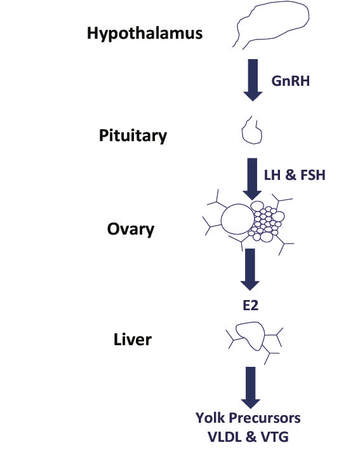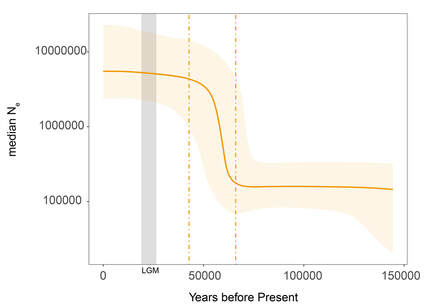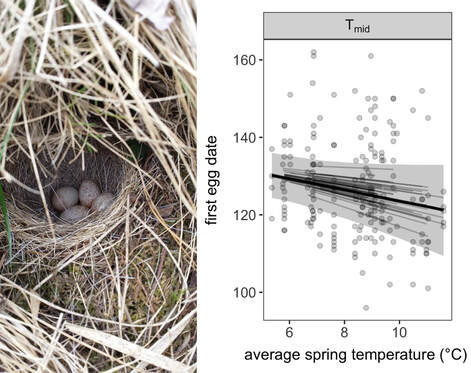Environmental challenges presented by changing seasons have shaped seasonal patterns of migration and reproduction into two of the most consistent adaptations across the animal world. Broadly, I am interested in the physiological and molecular mechanisms linking significant life-history traits (i.e., animal migration and reproduction) and the evolutionary consequences of variation in these traits.
Additionally, my research program has emphasized sex differences in these mechanisms, by primarily focusing on female birds. Male and female animals differ vastly in their reproductive timing and the physiological basis of their reproduction. Females also act as the gatekeepers to reproduction: female timing determines when breeding can occur and female physiology determines the number of offspring produced, resulting in fitness consequences for both sexes. I discuss the persistent sex bias favoring males in the literature on reproductive physiology in birds in this paper. With colleagues, I discuss recent advances in the field and future directions for emphasizing female behavioral endocrinology in this recent publication.
Additionally, my research program has emphasized sex differences in these mechanisms, by primarily focusing on female birds. Male and female animals differ vastly in their reproductive timing and the physiological basis of their reproduction. Females also act as the gatekeepers to reproduction: female timing determines when breeding can occur and female physiology determines the number of offspring produced, resulting in fitness consequences for both sexes. I discuss the persistent sex bias favoring males in the literature on reproductive physiology in birds in this paper. With colleagues, I discuss recent advances in the field and future directions for emphasizing female behavioral endocrinology in this recent publication.
Reproductive timing as a temporal barrier
|
Seasonal sympatry presents an ideal opportunity for studying how divergent migratory behavior might shape isolating barriers. Seasonal sympatry is when populations that differ in their propensity to migrate (i.e., migrant vs. non-migrant) are living in the same geographic space for part of the year, but are otherwise geographically isolated.
In early spring, closely related populations experience the same environmental cues, but physiologically are quite different as one population prepares for migration while the other prepares for reproduction. Differences in reproductive timing could serve as a temporal barrier and prevent interbreeding between seasonally sympatric populations. Our results suggest that females that differ in migratory behavior also differ in timing of reproductive development. Differential transcript abundance of receptors may also explain the mechanisms for how females differ in timing of reproductive development. Therefore, differences in migratory behavior, and consequent differences in reproductive timing, could prevent interbreeding between closely-related populations. |
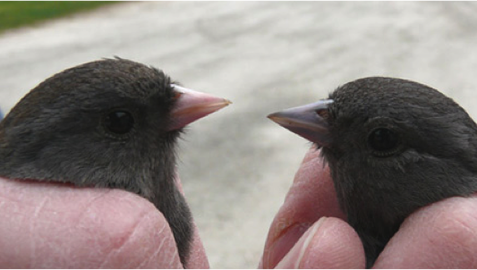
Kimmitt, A.A., Hardman, J.W., Stricker, C.A. and Ketterson, E.D., 2019. Migratory
strategy explains differences in timing of female reproductive development in seasonally sympatric songbirds. Functional Ecology, 33(9), pp.1651-1662.
Kimmitt, A.A., Sinkiewicz, D.M. and Ketterson, E.D., 2020. Seasonally sympatric songbirds that differ in migratory strategy also differ in neuroendocrine measures. General and comparative endocrinology, 285, p.113250.
Kimmitt, A.A., Webb, A.L., Greives, T.J. and Ketterson, E.D., 2020. Migrant and resident female songbirds differ in gonadal response to upstream stimulation during seasonal sympatry. General and Comparative Endocrinology, 293, p.113469.
Mate preferences in seasonal sympatry
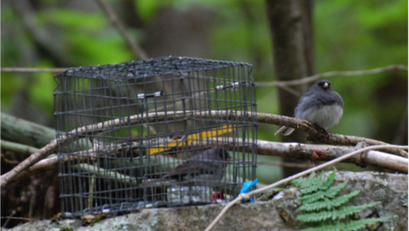
Residents that initiate breeding prior to the departure of migrants may avoid interbreeding with migrants by exhibiting mate preferences for local individuals. Choosing a mate with similar reproductive timing in seasonal sympatry may be critical for both males and females.
We found male mate preferences during seasonal sympatry in early spring. We can conclude that males distinguish between females that differ in migratory behavior during seasonal sympatry because risk of interacting with a non-reproductive female is high.
Kimmitt, A.A., Dietz, S.L., Reichard, D.G., and Ketterson, E.D., 2018. Male courtship preference during seasonal sympatry may reinforce population divergence. Ecology and Evolution 8(23), pp.11833-11841.
